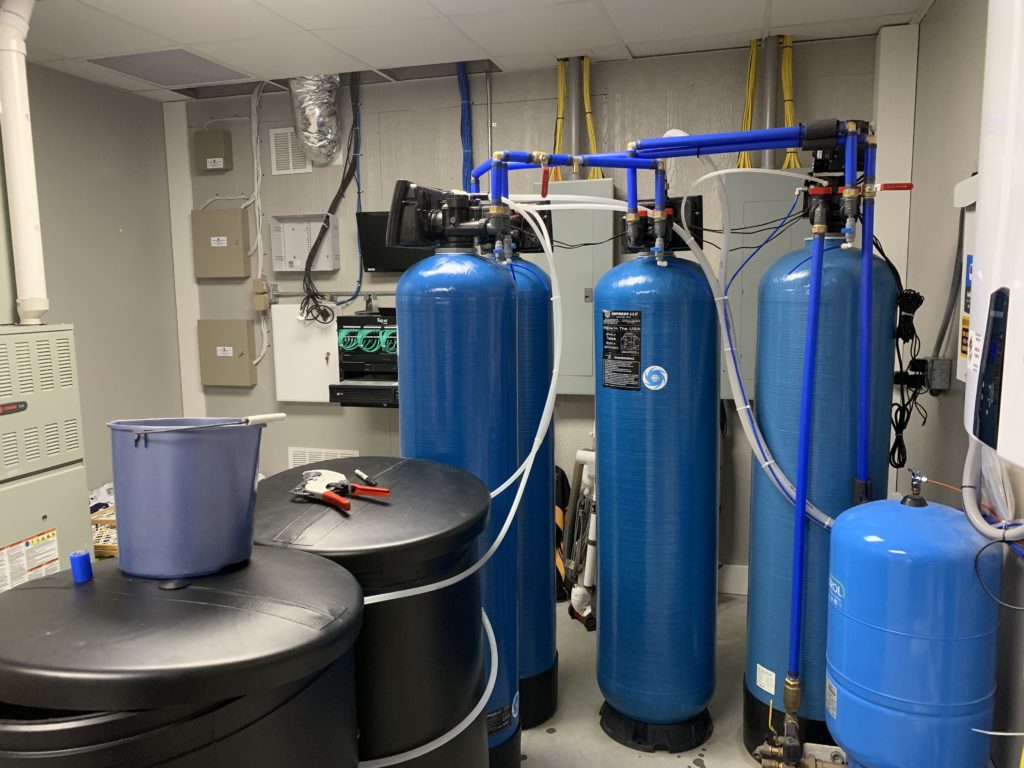We want to make sure our customers have a safe, reliable drinking water supply. We understand that most of the time families are consuming the water from the wells we provide. After the well is drilled and the pump system installed we disinfect the entire system using chlorine to kill bacteria. After the disinfectant is pumped off a water sample is collected and tested using a local state approved lab or the National Testing Laboratory. We want to know your water is safe for consumption. We have a number of ways to treat water to meet NSF Standards when necessary.

Water softening – Our region is situated on a karst topography comprised mainly of limestone and dolomite. The term karst means the rocks are somewhat soluble in water due to the mild acidic condition of the rainwater.. As the rainwater works its way through the layers of rock underground it picks up a variety of dissolved mineral . The result is groundwater we withdraw from wells is commonly referred to as hard water. Meaning the total dissolved solids (TDS) of the water has been elevated from being in contact with this type formation. A water softener removes those mineral from the water. The water is then generally referred to as soft water. Technically this process is called an ion exchange process. The mineral content of the water is replaced with sodium from a salt brine solution used to periodically regenerate the media within the water softener.
Reverse Osmosis – This filtration process significantly reduce the level of total dissolved solids in water. A spiral wound permeable membrane is used to screen out unwanted contaminants in the water. The water pressure across the membrane is increased with a booster pump. The increase of pressure usually to just over 100 psi results in a pore size of .0001 micron in the membrane. As the water is forced thru the small pores the unwanted contaminants are screened out and carried away by a constant stream of water flowing to waste. To give you a reference to pore size a human hair is 80-90 micron in diameter
UV LIGHT DISINFECTION – Ultraviolet light is the most commonly used means of sterilizing Bacteria or Viral contaminants today where the point of use is local. However, there is no downstream disinfection so the device cannot be used in larger applications. This also means the downstream plumbing system must be disinfected when the system is initially installed and at every service of the plumbing system or replacement of the UV lamp.